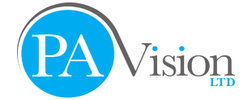Acuity Flip Test
This test is designed to measure visual acuity of young children (1-3 years of age), or older children or adults with disabilities. It relies on the technique of preferential looking, so that the patient does not need to be able to recognise or name pictures.
Each page of the test contains a picture, made up of black and white outlines. The proportion of black and white is the same, so that the average brightness of the outline exactly matches the grey background.
This means that when the outline is too narrow to be seen, the picture merges into the background and becomes invisible. The targets are known as ‘vanishing optotypes’. The technique of preferential looking means that all the patient is required to do is to look at the picture. If he or she can look at the picture, we know that he/she can see the outline. The outlines narrow as the test proceeds and we score the visual acuity as the narrowest outline that can be seen.
The test can be held on the examiner’s lap or placed on a table between examiner and child or can be held freely or mounted on the easel.
Each page of the test contains a picture, made up of black and white outlines. The proportion of black and white is the same, so that the average brightness of the outline exactly matches the grey background.
This means that when the outline is too narrow to be seen, the picture merges into the background and becomes invisible. The targets are known as ‘vanishing optotypes’. The technique of preferential looking means that all the patient is required to do is to look at the picture. If he or she can look at the picture, we know that he/she can see the outline. The outlines narrow as the test proceeds and we score the visual acuity as the narrowest outline that can be seen.
The test can be held on the examiner’s lap or placed on a table between examiner and child or can be held freely or mounted on the easel.
Contact us
|
Social MediaLegal |
Find us |
©
PA Vision 2023 All Rights Reserved - Zapped Digital


